9 Hazardous Products We Can’t Believe Were Legal – And 9 Classics That Stood The Test Of Time
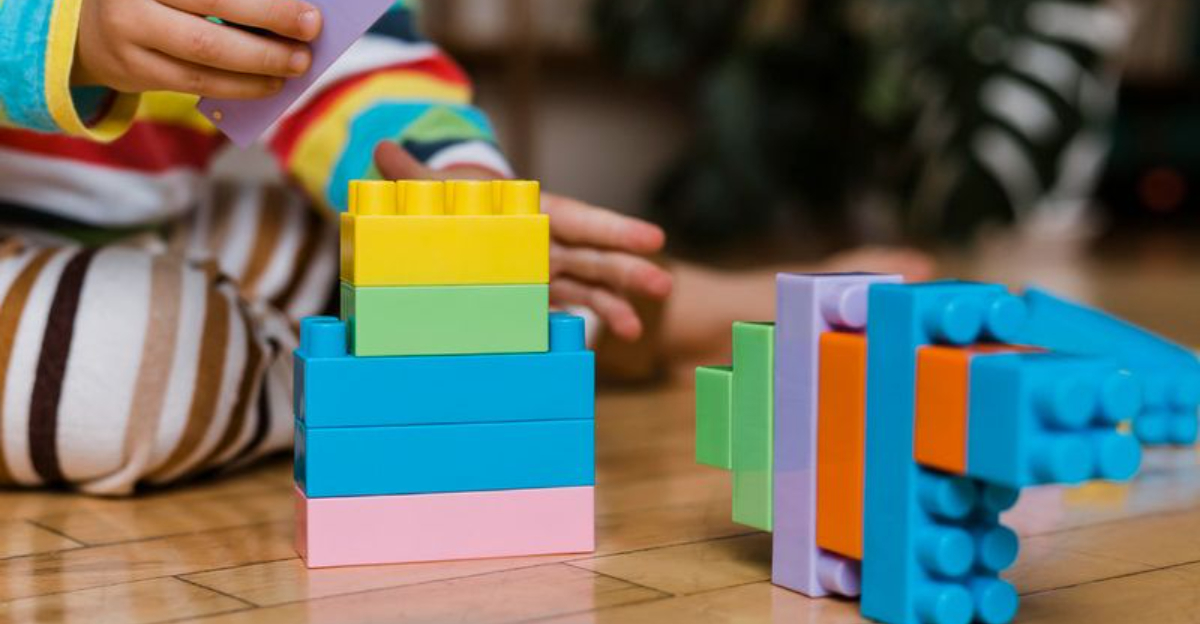
In the wonderfully weird world of consumer history, some products make you wonder, “How did anyone think that was a good idea?”
From asbestos-laced insulation to lead-filled toys, there was a time when danger came gift-wrapped in shiny packaging—and nobody blinked. Yet, alongside these eyebrow-raising relics are the gems: vinyl records, classic board games, and household staples that have aged like fine wine.
Together, they paint a colorful (and occasionally combustible) picture of how our tastes, safety standards, and sense of humor have evolved—or, in some cases, spectacularly stalled. It’s a journey through human ingenuity and glorious missteps, with a wink and a wince.
So whether you’re a nostalgia nerd, a trivia buff, or just someone who enjoys marveling at past absurdities, this list is your ticket to a tour of the bizarre and the beloved. Grab your popcorn—and maybe a fire extinguisher—and let’s dive into ten “What were they thinking?” items and ten timeless icons.
1. Asbestos
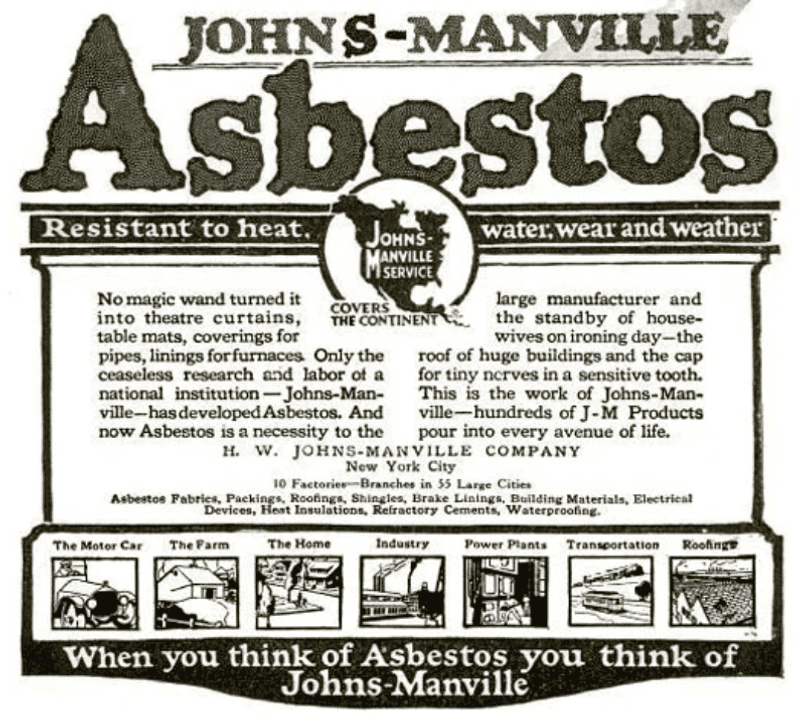
Ah, asbestos, the miracle mineral that wasn’t. Once hailed for its fire-resistant properties, this fibrous material was a staple in construction and even in children’s crayons—because who wouldn’t want a little lung hazard with their coloring?
The catch? Inhaling asbestos fibers can lead to serious health issues like lung cancer and mesothelioma. Despite the dangers, asbestos remains legal in certain applications in the U.S., making it the party guest that overstays its welcome.
It’s like the friend you invite over for a movie and they never leave! You’d think a material responsible for about 15,000 deaths annually would be shown the door. Yet, here we are, decades later, still figuring out how to say goodbye to this toxic companion.
2. Lead-Based Paint
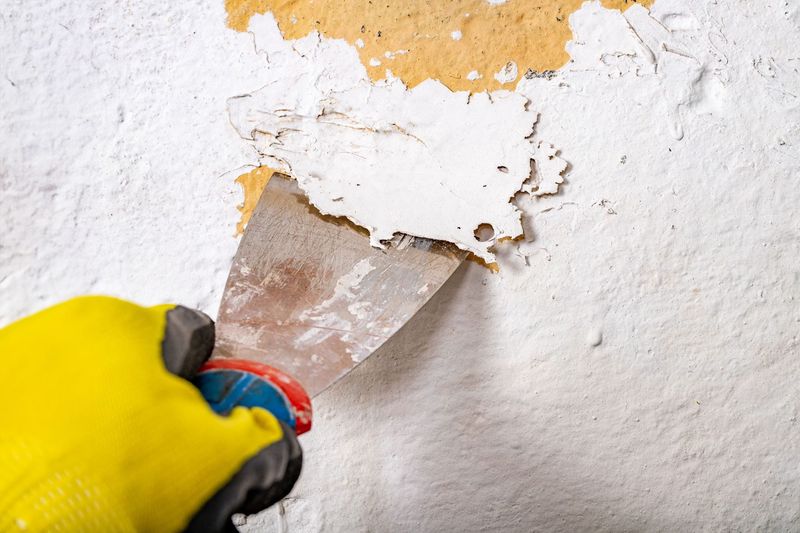
Lead-based paint: the colorful villain lurking in your walls. Once the go-to choice for brightening homes, it’s now known for causing developmental delays and learning difficulties in children. It’s like a pop quiz you didn’t study for, but with health consequences.
Banned in residential properties in 1978, lead-based paint still haunts older homes, popping up unexpectedly like an unwanted guest. Imagine the surprise when your seemingly innocent vintage toy collection turns into a health hazard.
It’s less ‘retro’ and more ‘retroactive nightmare.’ Now, when I walk into a home with its original paint job, I wonder if it’s a historical relic or a ticking time bomb. Just like disco music, some things are better left in the past.
3. Mercury Thermometers
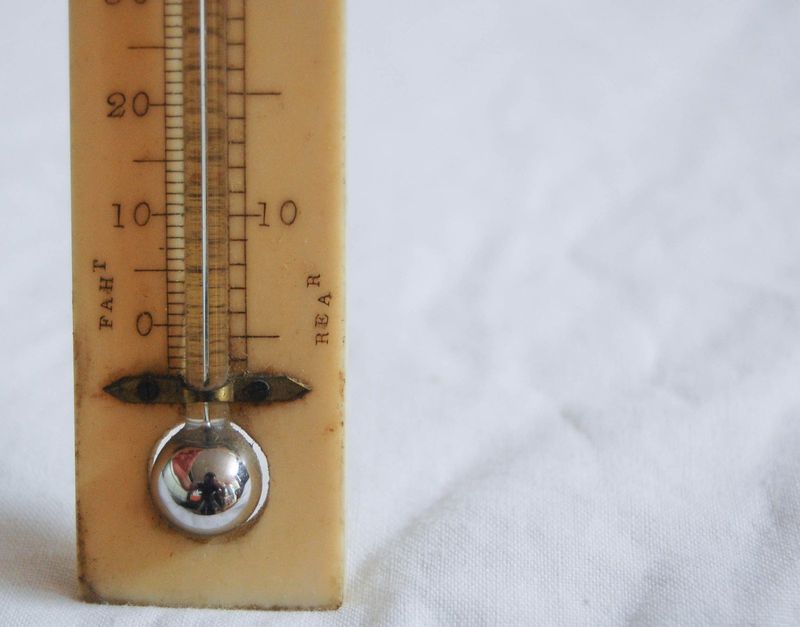
Remember mercury thermometers? Those slender glass instruments that doubled as a health hazard? While they reliably measured your temperature, they also posed a risk if broken, releasing toxic mercury into the environment. It’s the kind of drama you didn’t need alongside a fever.
Thankfully, these shiny silver tubes of trouble are now banned in many states, having been replaced by digital alternatives. While some might miss the nostalgia, I’d rather not risk a hazardous cleanup every time I’m under the weather.
It’s like swapping a gas-guzzling car for an electric one—better for you and the planet. So, farewell mercury thermometers; thanks for the readings, but we’ll take our temperatures without the side of toxicity.
4. Polychlorinated Biphenyls (PCBs)
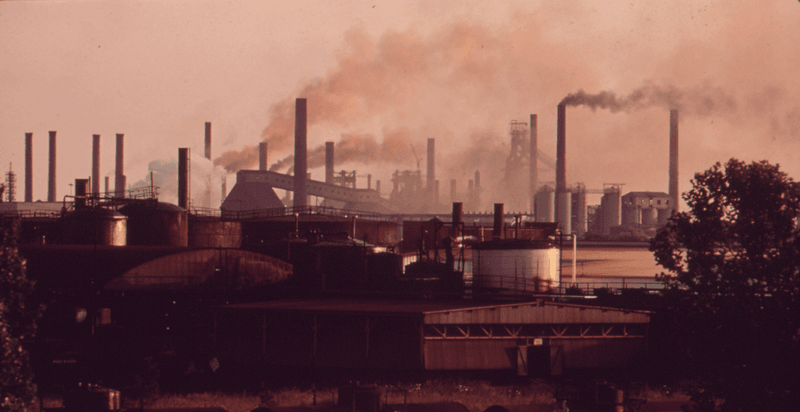
PCBs: the once ubiquitous industrial powerhouse turned environmental menace. These chemicals were widely used in electrical equipment and paints, flaunting their versatility like a jack-of-all-trades. Unfortunately, they overstayed their welcome, accumulating in the environment and posing health risks.
It’s like inviting a guest who never leaves and eats all your food. These compounds were banned in 1978, but their legacy lingers, reminding us of a time when convenience trumped caution.
I’ve often wondered how something so persistently harmful could be so widely accepted; it’s like realizing your favorite snack is full of trans fats. Now, as we peel back the layers of industrial history, PCBs serve as a cautionary tale of innovation gone awry.
5. DDT (Dichlorodiphenyltrichloroethane)
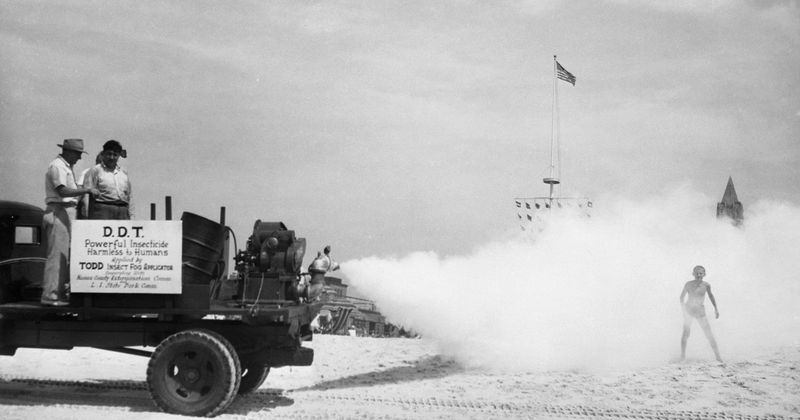
DDT, the pesticide that wrote its own infamous chapter in agricultural history. Known for controlling mosquitoes and boosting crop yields, it was the go-to solution until its environmental impact was laid bare. It’s like adopting a pet tiger—exciting at first, but ultimately destructive.
Banned in 1972, DDT lingered in ecosystems, threatening wildlife and human health. I often think about how something meant to protect us from malaria turned into a long-lasting ecological blunder.
It’s a reminder that not all that glitters is gold, or in this case, safe to spray on your crops. Its legacy now serves as an environmental lesson, teaching us the importance of thinking long-term before embracing quick fixes.
6. CFCs (Chlorofluorocarbons)
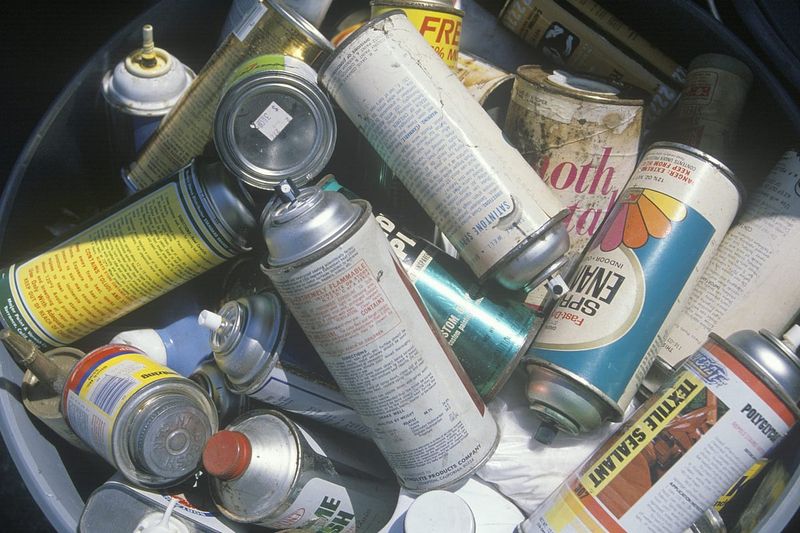
Once upon a time, CFCs were the cool kids on the block. Used in refrigerators and aerosol cans, they made life convenient and comfortable. But like a high school drama, they had a secret: they were depleting the ozone layer. It’s like realizing your charismatic friend is actually a troublemaker.
The U.S. began phasing out CFCs in 1994, saving the ozone layer from further harm. I remember the shift to CFC-free products, as if the planet collectively decided to ground its rebellious teenager.
Today, as we enjoy our ozone-friendly aerosols and refrigerators, we can breathe a little easier knowing we’ve learned from past missteps. CFCs remind us that sometimes, the price of cool is too high.
7. Vinyl Chloride
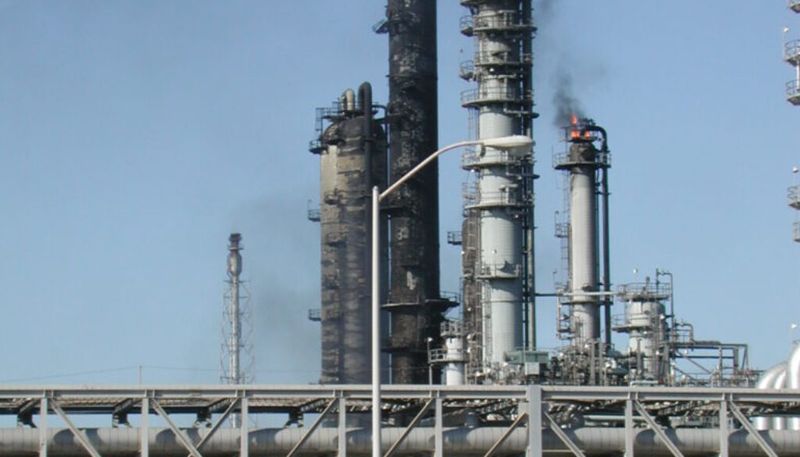
Vinyl chloride: the chemical that gave us PVC plastics but also a health scare. Used in everything from pipes to records, it was like a versatile artist with a dark side. Exposure risked liver damage, and eventually, it was banned in certain applications.
It’s like buying a ticket to a concert only to find out the headliner is a health hazard. Vinyl chloride serves as a reminder that not all innovations are created equal, and not every product is worth the risk.
I sometimes wonder about the balance between progress and precaution, and how easily we can tip the scales. As we move towards safer alternatives, vinyl chloride remains a footnote in the cautionary tale of industrial advancement.
8. Phthalates
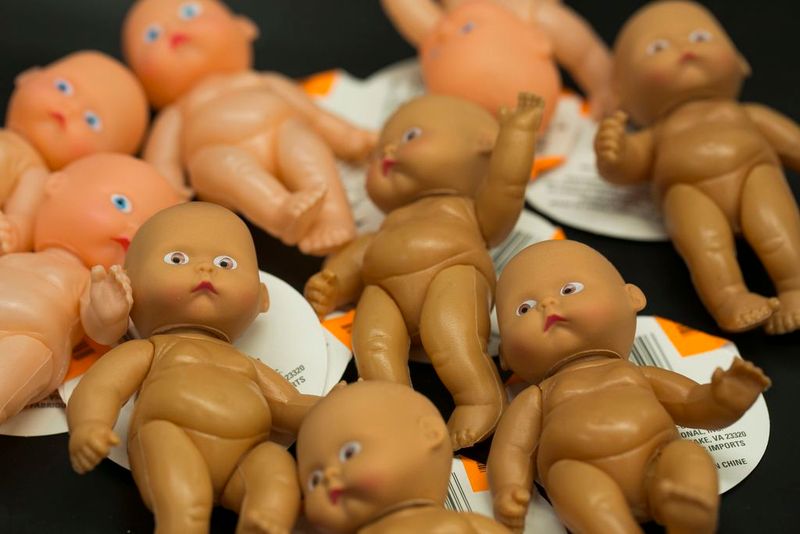
Phthalates, the mischievous culprits of children’s toys and cosmetics, snuck into our homes under the guise of making plastics flexible. It’s like discovering your favorite childhood candy was full of sugar—delightful but not without consequences.
Linked to reproductive issues, they’ve been banned in children’s products, marking a victory for safety. I recall the shift towards phthalate-free products, akin to a detox for the toy industry. It taught us to question what goes into the products we cherish.
Now, as parents seek out safer options, phthalates serve as a reminder that not all that’s bendy is beneficial. This chemical saga underscores the ongoing journey towards transparency and health in consumer goods.
9. Bisphenol A (BPA)
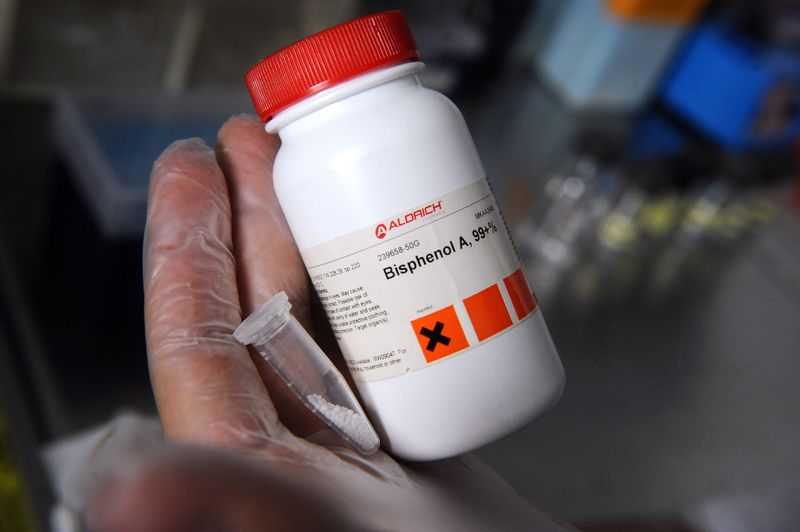
BPA: the under-the-radar disruptor hiding in plain sight. Found in plastics and resins, it was once a staple in baby bottles and food containers. But like an unexpected plot twist, it was linked to hormonal disruptions, prompting bans in baby products.
It’s like finding out your comfort food has hidden calories. The shift to BPA-free products marked a turning point, emphasizing consumer awareness and safety. I remember the BPA-free labels popping up, much like the organic movement in food.
Today, we think twice about the materials we use daily, and BPA has become a symbol of the power of informed choices. It reminds us that vigilance is key in safeguarding our health and well-being.
10. Tris (2,3-dibromopropyl) Phosphate

Tris, the flame retardant that brought uninvited danger to the sleepover. Used in children’s sleepwear, it seemed like a guardian angel against fires. But reality hit like a plot twist: Tris was a carcinogen. Banned in 1977, it left behind a legacy of cautious bedtime rituals.
It’s like discovering your childhood bedtime story had a dark ending. I think of Tris when I choose sleepwear for my own kids, always opting for safety over nostalgia.
This chemical taught us that good intentions don’t always yield good outcomes. Tris is a reminder of the delicate balance between innovation and caution. As we tuck in for the night, we now choose wisely, free from the ghosts of past hazards.
11. Vinyl Records

Vinyl records: the timeless musical companions that refused to fade away. In an era dominated by streaming, these analog disks continue to spin their charm, much like a classic movie that never gets old. With their rich sound and tactile experience, they defy digital’s cold precision.
I fondly remember my parents’ record collection, each album a story told through crackles and pops. Today, vinyl enjoys a renaissance, embraced by audiophiles and nostalgia seekers alike.
It’s like rediscovering a beloved book in a digital age. Vinyl’s enduring appeal lies in its authenticity, reminding us that sometimes, the old ways hold a magic all their own. This classic’s staying power is music to our ears.
12. Cast Iron Skillets
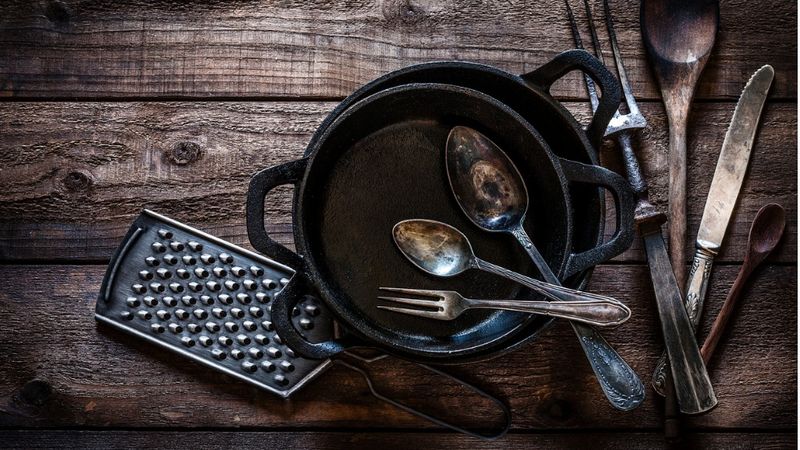
Cast iron skillets: the culinary heirlooms that have seasoned generations of meals. With their even heating and durability, they’re kitchen staples that don’t just cook food—they craft memories. I inherited mine from my grandmother, each scratch a story of family dinners and Sunday breakfasts.
Unlike non-stick pans, they require care but reward with a lifetime of service. It’s like maintaining a classic car; a bit of effort for unparalleled performance.
Today, cast iron remains a favorite among chefs and home cooks, celebrated for its versatility and timeless appeal. This kitchen classic stands as a testament to enduring quality, proving that some culinary traditions are worth preserving.
13. Leather Jackets

Leather jackets: the iconic fashion statement that never goes out of style. Synonymous with rebellion and cool, they’ve graced everyone from movie stars to rock legends. I remember slipping into my first leather jacket, feeling instantly transformed into a road-ready adventurer.
They age gracefully, telling stories through each scuff and patina. Unlike fleeting trends, leather jackets carry an aura of timelessness, much like a black and white film.
Today, they hold their ground in wardrobes worldwide, cherished for their durability and edge. This fashion staple reminds us that true style transcends time, offering a slice of enduring cool in an ever-changing world.
14. Swiss Army Knives
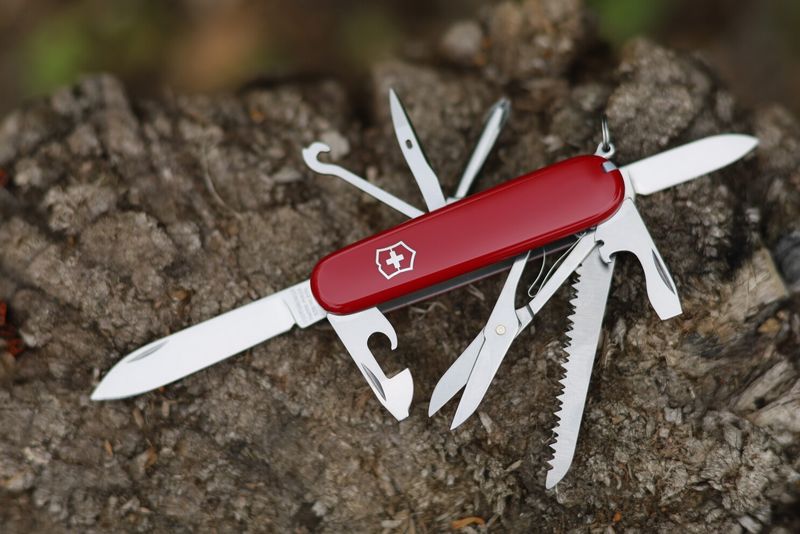
Swiss Army knives: the pocket-sized wonders that turn anyone into a prepared adventurer. With their myriad tools, they’re like the Batman utility belt of the everyday person. I’ve relied on mine for everything from opening packages to crafting impromptu picnics.
Unlike single-purpose tools, these knives embrace versatility, offering a solution for almost any challenge. They’re a reminder that great things come in small packages. As I carry mine on hikes and travels, its reassuring weight speaks of readiness and adaptability.
This classic tool continues to be a reliable companion, proving that in a world of complexity, simplicity and functionality still reign supreme.
15. Coca-Cola
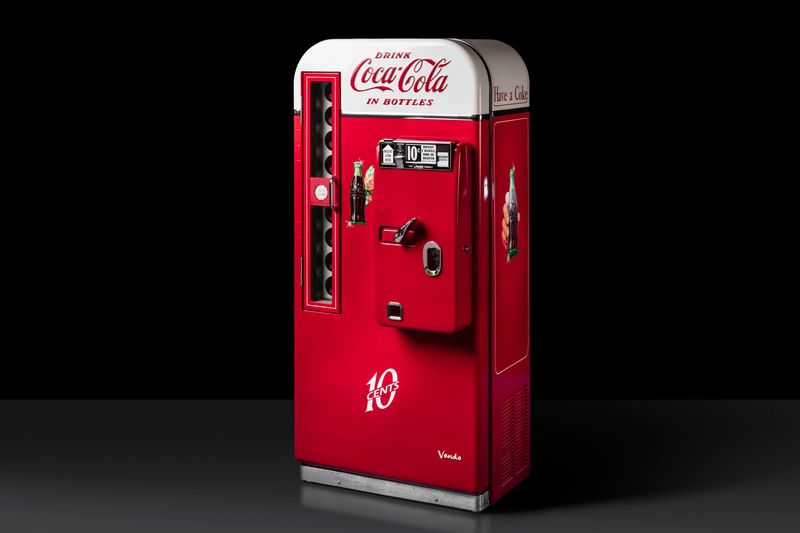
Coca-Cola: the quintessential soda that’s fizzed its way into global culture. Since its invention in the late 19th century, it’s become more than a beverage—it’s a pop culture icon. I associate its taste with summer picnics and family gatherings, a sweet companion through life’s moments.
Unlike fleeting soda trends, Coca-Cola persists, a fizzy constant in an ever-evolving world. Its secret formula and iconic red branding evoke nostalgia, much like a favorite childhood memory.
Today, Coca-Cola remains a symbol of refreshment and togetherness, proving that some classics never lose their sparkle. This beloved soda continues to quench thirsts and capture hearts worldwide.
16. LEGO Bricks
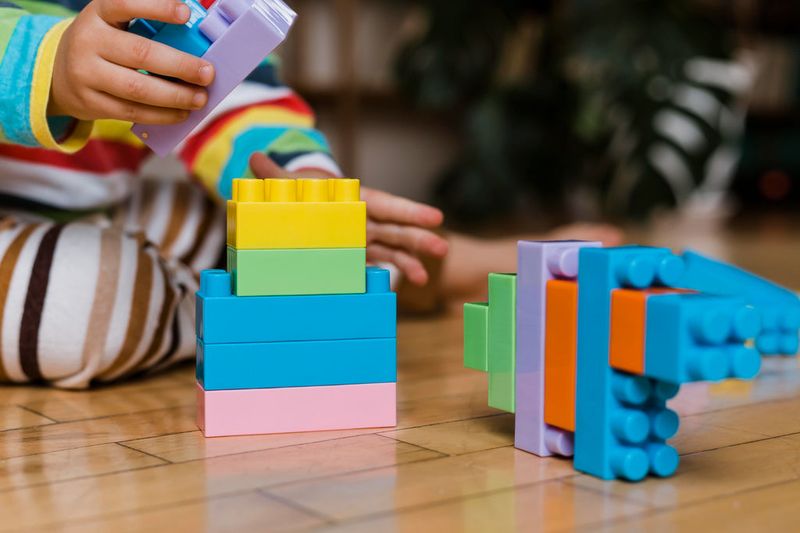
LEGO bricks: the building blocks of imagination that have fueled countless childhoods. With their interlocking design, they transform limitless creativity into tangible forms. I recall countless hours spent crafting worlds from these colorful bricks, each click a step into a universe of possibilities.
Unlike fleeting toys, LEGOs grow with you, evolving from simple structures to intricate masterpieces. Their enduring appeal lies in their adaptability, inviting generations to build, create, and imagine.
Today, LEGO remains a beloved staple in toy chests, cherished for its power to unite creative minds. This classic continues to inspire, proving that when it comes to play, imagination knows no bounds.
17. Ray-Ban Aviators
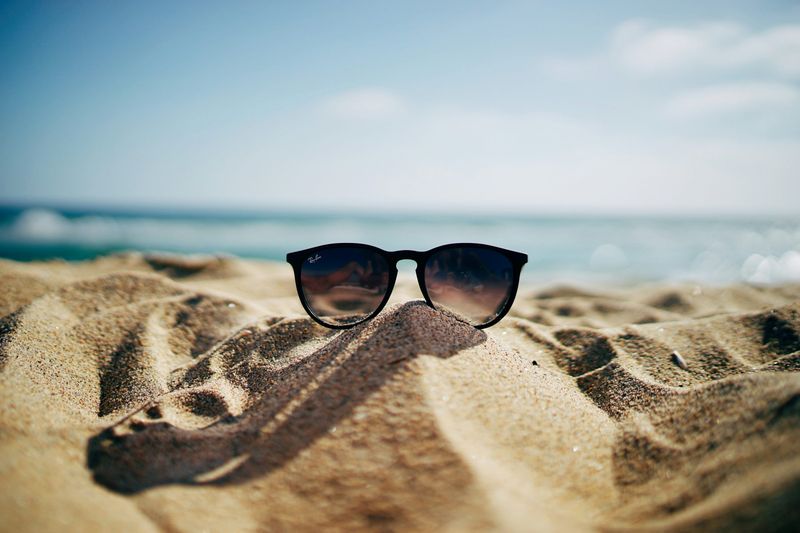
Ray-Ban Aviators: the sunglasses that define effortless cool. Since their creation for pilots in the 1930s, they’ve become a staple of fashion and functionality. I remember slipping on my first pair, feeling instantly transported to a sun-drenched beach scene.
Unlike trendy eyewear, aviators carry an air of timeless sophistication, much like a classic novel. Today, they continue to grace faces worldwide, cherished for their iconic shape and protective qualities.
This eyewear classic reminds us that true style is about confidence, offering a glimpse into a world where the sun always shines. With Ray-Bans, every day feels like a sunny adventure.
18. Parker Pens
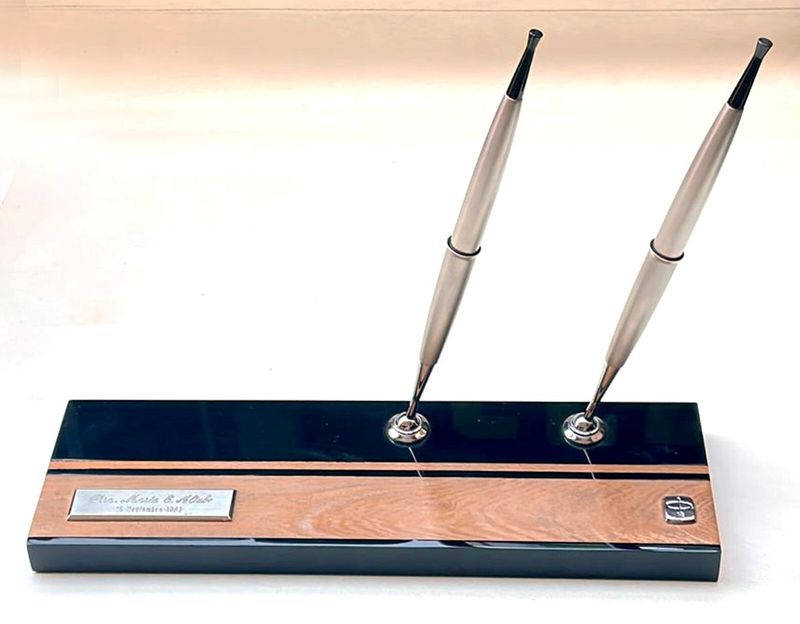
Parker pens: the writing instruments that have penned history with elegance. Known for their craftsmanship and style, they’ve accompanied writers, thinkers, and dreamers through decades. I treasure my Parker pen like a relic of a golden era, its ink flowing with stories untold.
Unlike disposable pens, Parkers are heirlooms, offering both reliability and a touch of luxury. As digital devices dominate, these pens stand as a reminder of the joy found in the tactile art of writing.
Today, Parker continues to be a symbol of sophistication and tradition, proving that in a fast-paced world, there’s still grace in slowing down. This classic pen remains a favorite among those who appreciate the finer things.
